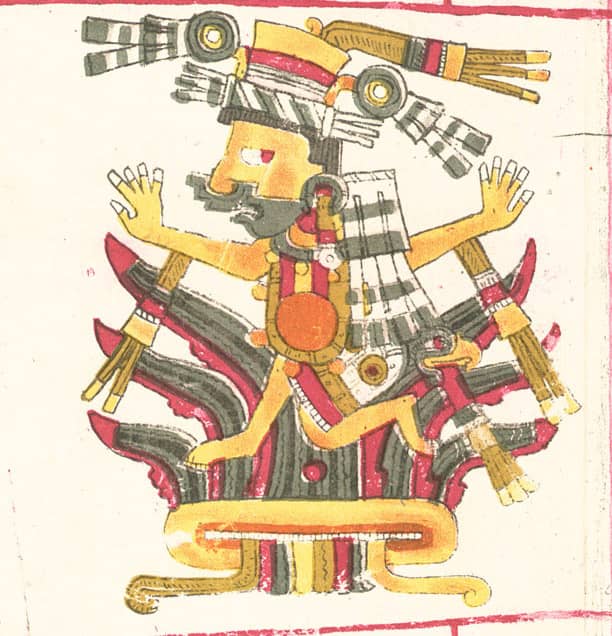The next time you order a tequila consider the vital pollinators that make it possible: Mexican long-nosed bats. Weighing about as much as a light bulb, these bats undertake an incredible 1,200km migration each year. Pregnant females feed on the nectar of agave plants as they travel from Mexico to the southern United States, sustaining themselves for the journey before giving birth to a single pup. Their role is essential—without them, the agave plants that provide us with tequila could not survive. Yet, in an ironic twist, human exploitation of agaves now threatens the very survival of this species.
The loss of biodiversity is one of the most devastating indicators of human impact on the biosphere. WWF’s 2024 Living Planet Report reveals an alarming 73% average decline in monitored wildlife populations since 1970. The report emphasizes that as the Earth nears critical tipping points with severe implications for humanity, an urgent and unified global effort is essential within the next five years to address the dual crises of climate change and biodiversity loss.
A major cause of biodiversity loss is the destruction of natural habitats to make way for human food and drink production. Many companies across this sector increasingly recognize the importance of biodiversity in the wake of the growing acceptance that nature plays a vital role in our economy. Coupled with regulatory pressure and consumer demand companies are taking various initiatives to mitigate their impact on nature.
Collaborating with the Science Based Targets Network, Metabolic has made significant strides in recent years publishing comprehensive corporate guidelines to help companies set science-based targets for nature and climate. The adoption at COP15 of the Kunming-Montreal Global Biodiversity Framework (GBF) articulated the need for humanity to live in harmony with nature by 2050. And yet, the pace of change is still too slow with efforts to ramp up being met with frequent resistance. The stalling of negotiations for biodiversity at COP16 in Colombia was yet another setback for humanity. Clearly protocols, frameworks, and policies are not enough to halt the extinction of species and protect the planet’s biodiversity. What might it take, then, for us to collectively solve this challenge?

Mexica deity Mayahuel as depicted in the Codex Borgia (16th Century)
Indigenous knowledge: respecting the balance
An aspect not often explicitly addressed in these frameworks and science-based approaches might offer a clue: safeguarding biodiversity is as much a cultural endeavor as it is a scientific discipline. For example, Indigenous communities in Central America revered bats both culturally and for their role as pollinators of agave plants, essential for traditional beverages like mezcal and tequila.
Ancient Mesoamericans valued agaves not only for their material uses but also for their spiritual significance. This was tied to the fermentation of their natural sap, aguamiel, which was then transformed into pulque, a sacred beverage used in religious rituals. In Mexica (Aztec) mythology, agaves were embodied by the deity Mayahuel, a symbol of fertility often depicted as an agave plant surrounded by bird-like creatures. Some anthropologists think this may allude to the winged creatures who feed on the nectar of agave flowers, like bats and hummingbirds. The Mexica also associated bats with the fertility of the land as they play a vital role in forest regeneration and agriculture by pollinating flowers or dispersing seeds over long distances.
This cultural significance of plants and animals reflects a deep respect for nature’s interconnectedness present in indigenous knowledge systems. In contrast, modern large-scale monoculture agave plantations catering to increasing Western demand for these beverages threaten local bat populations, betraying a lack of connection to the species on which agave depends and vice versa.

We can’t expect people to take care of things they don’t care about
How did we become so disconnected from nature? Early philosophers like Aristotle and Plato, already considered humans as separate from, and superior to other forms of life. This hierarchical ordering of humanity at the top of a ‘great chain of being’ continued to be developed during the medieval period. Later, enlightenment thinking laid the groundwork for many of the ecological challenges we face today by emphasizing nature as a resource to be controlled and exploited for human progress. This idea of ‘human exceptionalism’ further embedded earlier ideas of human superiority over the natural world. More recently, the Great Acceleration—the rapid and widespread increase in industrial human activity that began in the mid-20th century—has dramatically altered society. Compared to our rural history, we hardly interact with nature anymore, spending 90% of our time indoors. With 57% of the world population living in cities, we are now an animal species that predominantly lives in dense urban concrete jungles disconnected from the resources and processes used to make the things we consume.
We have suffered an “extinction of experience”, a phrase coined over 20 years ago by naturalist Robert Pyle. This is bad news for our health, emotions, attitudes, and behaviors. It has also been proposed as a root cause of unsustainability. This implies that fostering our connections with nature and building a stronger “nature-culture” will enable the societal shift toward sustainability we need to solve the biodiversity crisis.

Rekindling our connection with nature
There are some simple and impactful actions that organizations and individuals alike can take. These actions can be grouped into five types of human-nature connections, originally identified by Interdisciplinary Sustainability Scientist Christopher Ives and colleagues in their 2018 article Reconnecting with Nature for Sustainability. They are:
- Material
- Experiential
- Cognitive
- Emotional
- Philosophical
It is helpful to imagine these connections as leverage points; places within systems where actions can have widespread effects on the character, behavior, and identity of the system. The human-nature connections, and the types of leverage points they represent, operate along an interacting continuum, ranging from the individual to societal, and from our internal to external world. Shallow leverage points are easier to identify and modify but tend to produce limited or short-term effects. Deep leverage points, on the other hand, are harder to identify and influence but have the potential to create profound, long-lasting changes.

Classification of interventions aimed at reconnecting people with nature to drive systemic change. “Outer” connections to nature, such as material and experiential interactions, are more likely to affect system parameters, like land-use patterns or pollution levels. In contrast, “inner” connections, such as philosophical perspectives and emotional responses to nature, are more likely to shape the fundamental goals and values that underpin the system. Source: Ives et al. 2018.
Let’s explore these five types of human-nature connections and the restorative opportunities they offer at each stage along the continuum. We will move in ascending order, starting with the outer connections that have the lowest leverage potential and progressing to the inner connections with the highest.
Material Connection
Shallower leverage points emerge through our material connections to nature (i.e. extraction and use of resources). This is a realm within which agrifood businesses in particular have an important role to play. They can foster greater material connections to nature by recognizing and measuring their dependency on natural systems for the raw resources their business models depend on.
While significant strides have been made in establishing consistent methods for assessing corporate impacts on the environment, understanding dependencies has lagged because of the complexities of interconnections between businesses, nature, and society. Nevertheless, acknowledging these dependencies is vital. It strikes at the heart of our relationship with the natural world, far beyond mere impact assessment. Why? Because research highlights a general behavioral trend that when we recognize that we depend on something, we have a stronger inclination to nurture it compared to when we are merely impacted by it. New frameworks today offer guidance to corporate actors that are interested in evaluating their dependencies on nature.
Experiential and Cognitive Connections
To build a strong “nature-culture”, we have to look beyond the material dimension. Escaping our built environment and spending time in green spaces is a simple and effective way to enhance not only our experiential connections (i.e. physical interactions) with nature but our cognitive connections too. These are the mental processes involved in understanding, appreciating, and interacting with the natural world which can shape our knowledge, beliefs, and attitudes toward nature.
Spending time in nature increases our environmental values, health, and well-being. This in turn encourages pro-environmental attitudes and behaviors. Studies show that access to green spaces is associated with a 31% reduction in the likelihood of developing mental health disorders. In Canada, physicians can prescribe spending time in forests to anxious patients to reduce their stress levels and improve their quality of life. Visiting national parks or urban green spaces, birdwatching, volunteering on conservation projects, or swimming in the ocean are simple ways people can directly experience nature which in turn leads to better mental and physical health.
Ives explains how levers that can support these connections include cities adjusting transport networks to make it easier for people to access natural areas or planning laws to increase biodiversity in cities. Governments can revise educational curricula to allow school students to have greater interaction with nature, or host programs allowing free access to national parks, such as in the United States and South Africa.
Emotional Connection
Building stronger experiential and cognitive connections with nature in these ways is also likely to increase our emotional connections with nature—our feelings of attachment to or empathy toward nature. Good examples of this are the multiple reinforced connections from growing our food, and from outdoor activities. These can simultaneously promote sustainability, provide enriching outdoor experiences, enhance environmental knowledge, and foster emotional attachment to the natural world. Surfing for example has been shown to deepen emotional connections to nature through the direct immersion in the ocean environment. This constant interaction builds a deep sense of appreciation for the natural world. No wonder so many surfers are also fierce advocates for ocean conservation and environmental stewardship.
Many readers will likely have experienced similar feelings too—it is what you felt when you reached the top of the mountain and looked down with awe at the view below, or the excitement you felt when the seeds you planted began to sprout their first leaves. These positive emotional connections to nature increase our affinity toward it which research has shown contributes to willingness to protect the environment, especially in adolescents.

Philosophical Connection
According to Ives’ research, the deepest leverage points come from our philosophical connection to nature. This encompasses our worldview on what nature is, why it matters, and how humans ought to interact with it. These have the potential to shift our perspective on humanity’s relationship with the natural world, showing us that we are not separate from it. Because the 5 types of human-nature connections interact with and reinforce each other, deepening our material, cognitive, experiential, and emotional connections to nature is also likely to build our philosophical connection to it.
Rebuilding our philosophical connection to nature has the largest potential to drive a societal transformation toward sustainability but it is also likely the most difficult connection to change. This is because it demands not only a shift in deeply entrenched and nuanced cultural narratives but also a fundamental transformation in individual mindset—restoring our collective human-nature connection through personal reflection and change.
Another way to enhance this shift is to learn from indigenous knowledge systems that incorporate nature into the very fabric of their culture. Indigenous Peoples of the Great Plains and Intermountain West in the United States, including the Nez Perce, Lakota, Blackfoot, Cheyenne, Sioux, and Pawnee peoples, had long-running relationships with wolves. Wolves were regarded as spiritually powerful and intelligent animals, role models who taught people how to hunt. This conflicted with the imposed ideologies of Euro-American peoples which in contrast vilified them.
Bringing their Enlightenment cultural inertia and old-world myths about wolves to North America, European colonists hunted, trapped, and poisoned wolf populations over three centuries, perceiving them as threats. The wolf offered no obvious benefit to the settlers and so they drove them to near extinction. Their eradication from the North American landscape had a profound impact on the ecosystems in which wolves played a vital role. For example, in Yellowstone National Park, a cascade of changes occurred when the gray wolf (Canis lupus) was extirpated in 1926.
Without wolves to keep them in check, elk populations grew rapidly leading to overgrazing, especially of vegetation along rivers. This in turn impacted beavers which rely on trees to build dams leading to population declines which reduced wetland habitat that supported small mammals, birds, amphibians, and insects. The grazing pressure on riverine vegetation from elk increased soil erosion resulting in rivers becoming wider and shallower, making them less suitable for fish. Other predators like coyotes boomed without wolves, disrupting populations of smaller prey. This cascade of ecological disruption reveals how deeply anthropocentric philosophical attitudes toward nature—such as viewing wolves as threats rather than vital ecosystem regulators—can have devastating, far-reaching impacts on entire landscapes.
In 1995, wolves were reintroduced into the park and the Yellowstone ecosystem began healing. This shift in wolf management was driven by advancements in scientific knowledge but also a shifting human philosophy about wolves. Scientific evidence provided the ecological rationale, influencing philosophical perspectives about wolves among the public and politicians. Yet, long before modern ecological science and the conservation movement helped change attitudes toward wolves, North American Indigenous Peoples already understood the key role these animals played as apex predators maintaining harmony by preventing overpopulation of prey species and ensuring sustainable ecosystems.
The reintroduction of wolves into Yellowstone is a prominent example of how changes in our philosophical connection to nature can lead to enormous positive results for ecosystems and biodiversity. Core to the philosophy is the understanding that we are just one among many species bound together in an intricate web of life.

Nature’s intrinsic value
For centuries, many Indigenous communities have understood a truth that modern, industrialized societies often overlook: nature’s worth is not singularly confined to its utility for human benefit. What it provides is useful and in many cases essential for our global economy, however, this is not the inherent purpose of the natural world and its resources. Humanity exists in a delicate balance between what we use and what we allow to replenish. This is a perspective that has underpinned the philosophical human-nature connection for many Indigenous Peoples throughout history. This deep understanding challenges us to move beyond a transactional view of nature—one centered purely on dependency and extraction—and embrace the fact that humanity exists not apart from but as an integral participating component of the biosphere.
Christopher Ives’ research on human-nature connections highlights how material, experiential, and emotional relationships with the natural world can deepen our sense of connection. While understanding our dependence on nature is a vitally important starting point, it is not enough. True transformation requires a shift in our philosophical connection—a recognition that nature does not exist for our benefit alone but has intrinsic value that transcends us.
So, how can we begin this shift? Start by asking yourself simple yet profound questions:
- Do I see nature primarily as a resource, or do I value it on independent terms?
- Could the choices I make today—what I eat, drink, or buy—cause harm to ecosystems or species far beyond what I can see?
- Can I learn to appreciate nature for its beauty, complexity, and resilience, without placing my needs at the center?
Small actions, like learning about the ecological roles of species (such as bats or wolves), spending mindful time in nature, or exploring Indigenous perspectives, can help build this deeper philosophical connection. These inner shifts ripple outward, influencing how we view ourselves not as masters of the natural world, but as stewards and custodians within it.
The loss of biodiversity and the crises we face today stem not just from what we take from nature, but from how we perceive it. In short, we need to redefine our “nature-culture”. By humbling our expectations and recognizing that humanity exists at the privilege of nature, we can begin to transcend a low-leverage, material understanding of our connection to the natural world.
Next time you order a margarita or a round of tequila shots, consider the Mexican long-nosed bats. They pollinate not for us, but for the agave plants, the forests, and their survival. Their role is indifferent to the market demand of our species and yet this demand is destroying the plants upon which they depend. Citizens and policymakers will need to continue to push for ambitious policies to protect biodiversity. Companies will need to continue to develop corporate biodiversity strategies. And we still need to seek finance for biodiversity. But when we honor nature beyond just what it provides we begin to rebuild the intricate, interdependent bonds that sustain life on Earth. In this, we can find a way forward: a shared existence grounded in respect, humility, and care for the singularly beautiful world we all call home. It is doing this that will ultimately give our efforts wings.




